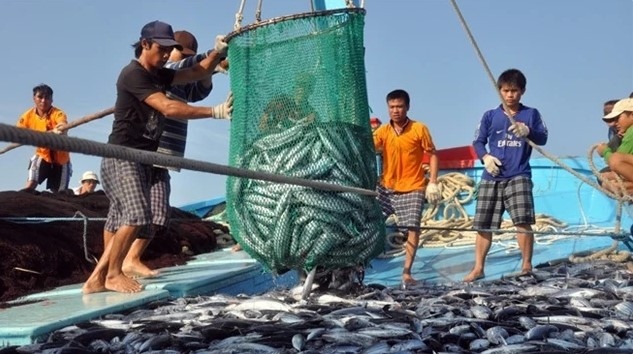Tightening regulations and limited marine farming may impact exports
Society – Economy - Ngày đăng : 18:20, 31/08/2024
The association reported that in the first seven months of 2024, exports reached US$2.1 billion, an increase of 6% compared to last year.
Vietnamese seafood was exported to 129 markets around the world, with its largest buyers being Japan, the US and the Republic of Korea (RoK). Up to the end of July, Vietnam exported US$444 million worth of seafood to Japan, a decrease of 4% period-on-period, US$300 million to the US, an increase of 14% and US$207 million to the RoK, an increase of 12%.
According to VASEP, tuna was the country’s leading product in terms of export value. In the first seven months of this year, Vietnam’s canned tuna exports to the US and the EU rose by 22% and 36%, respectively. Meanwhile, Vietnamese tuna exported to other large markets including Israel, Russia and the RoK also recorded strong growth.
Notably, Vietnamese canned tuna to the EU reached US$62 million, accounting for nearly half of the country’s tuna exports to the bloc with Germany, Poland, the Netherlands, Italy, Cyprus and Denmark being the main buyers.
Vietnamese seafood exporters, however, have voiced their concerns over recent regulations on the sizes of natural catches. They cited Decree 37/2024/ND-CP, effective from May 19, 2024, which requires the size for skipjack tuna to be at least half a metre.
It has blocked seafood companies from buying skipjack tuna catches from fishermen, as they claimed there was no way to ensure all fish in any catch meets the Government’s size regulations.
“While the new regulations are important to the protection of fishery resources in the long-term, companies may face difficulties in securing the raw materials, which may threaten their foothold in large export markets,” said Vu Duyen Hai, Director of the Department of Fisheries Exploitation under the Ministry of Agriculture and Rural Development.
Industry experts said tuna exports will likely find it challenging to maintain growth until the end of the year, with the US$1 billion export target for the year an extremely unlikely goal.
Meanwhile, squid and octopus ranked second in value among Vietnamese seafood, reaching US$351 million with the RoK being the largest buyer with purchases worth US$140 million, accounting for more than 40% of the products’ total export value, an increase of 13% compared to the same period last year.
According to VASEP, the RoK has been reducing imports from other sources including Japan, China and Peru, to purchase more from Vietnam, with industry experts saying Vietnam’s squid and octopus export to the RoK will likely experience strong growth in the remaining months of 2024.
Vietnam relies on three main sources for its seafood: fishing, marine farming and imports. According to the Directorate of Fisheries, in 2023 the country’s total marine farming output reached 789,800 tonnes, an increase of 10.1% compared to the previous year.
While it has been expected that the output this year will top 900 thousand tonnes, farmed seafood, including groupers, seabass, lobsters and bivalve molluscs, has not been able to match the strength of Vietnam’s exports of products such as tuna, mackerel and octopus.
According to the directorate, the country currently has 85,980 fishing vessels, of which 39,867 vessels are between 6-12m in length, 16,561 vessels are between 12-15m in length, 27,022 vessels are between 15-24m in length and 2,530 vessels are over 24m in length.
In recent years, the Government has implemented solutions to combat illegal fishing, an attempt to remove the "yellow card" warning from the European Commission (EC) imposed in 2017.

